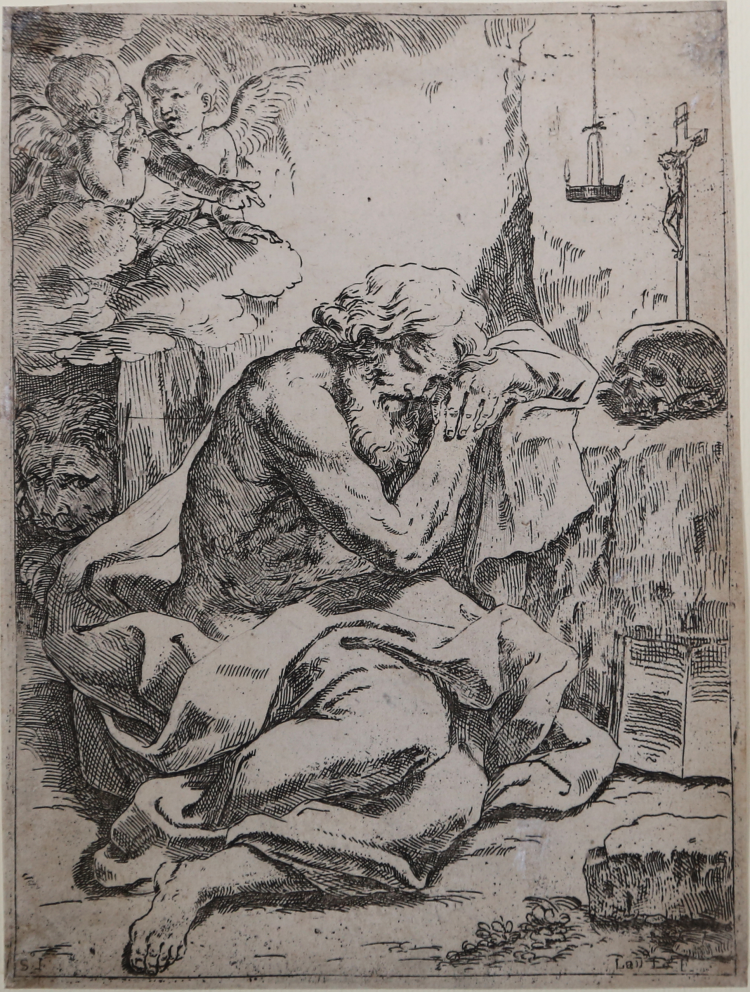




| Reference: | S24542 |
| Author | Lorenzo LOLI |
| Year: | 1660 ca. |
| Measures: | - x - mm |



| Reference: | S24542 |
| Author | Lorenzo LOLI |
| Year: | 1660 ca. |
| Measures: | - x - mm |
Etching, monogrammed on plate at the bottom right. From a drawing by Giovanni Andrea Sirani.
Magnificent proof printed on contemporary laid paper with watermark "jug", trimmed to the copperplate, traces of glue to the corners, otherwise in excellent condition.
Painter and engraver, pupil of Guido Reni and Giovanni Andrea Sirani from whom he often took the subjects of his engravings. Better known as an engraver than as a painter, he follows the classicist methods of the master Guido Reni, adopting a clear and loose sign. Today he is considered one of the protagonists of the Bolognese graphic panorama of the mid-17th century; twenty-five plates in total are attributed to him - according to Bartsch - in which some uncertainty in the use of bites is evident.
One of the best works of Loli. Ex collection E. Devaulx (Lugt 670).
|
Bartsch 14; Bertelà, Incisori Bolognesi ed Emiliani del’600, 754. Dimensioni 173x233.
|
Lorenzo LOLI (Bologna 1612 – 1691)
|
Although he is better known as engraver instead of painter, Loli was scholar of Guido Reni and he followed his master’s style in the choice of his subjects. Moreover, the way they worked their etchings was really peculiar: the stroke was clean and precise, perfectly calibrated, and really suitable for his classicist compositions. His graphic repertoire is actually wide; Bartsch catalogues twenty-five works, underlining in some cases the unperfect mordant of the plate. His subjects were taken from Reni’s production and that of his scholars, especially from Giovanni Andrea Sirani.
Although Loli’s production was mainly the result of imitation, this testifies the great importance that Reni’s style had in Bologna in the XVII century and it also act as an intermediary for its circulation.
|
|
Bartsch 14; Bertelà, Incisori Bolognesi ed Emiliani del’600, 754. Dimensioni 173x233.
|
Lorenzo LOLI (Bologna 1612 – 1691)
|
Although he is better known as engraver instead of painter, Loli was scholar of Guido Reni and he followed his master’s style in the choice of his subjects. Moreover, the way they worked their etchings was really peculiar: the stroke was clean and precise, perfectly calibrated, and really suitable for his classicist compositions. His graphic repertoire is actually wide; Bartsch catalogues twenty-five works, underlining in some cases the unperfect mordant of the plate. His subjects were taken from Reni’s production and that of his scholars, especially from Giovanni Andrea Sirani.
Although Loli’s production was mainly the result of imitation, this testifies the great importance that Reni’s style had in Bologna in the XVII century and it also act as an intermediary for its circulation.
|